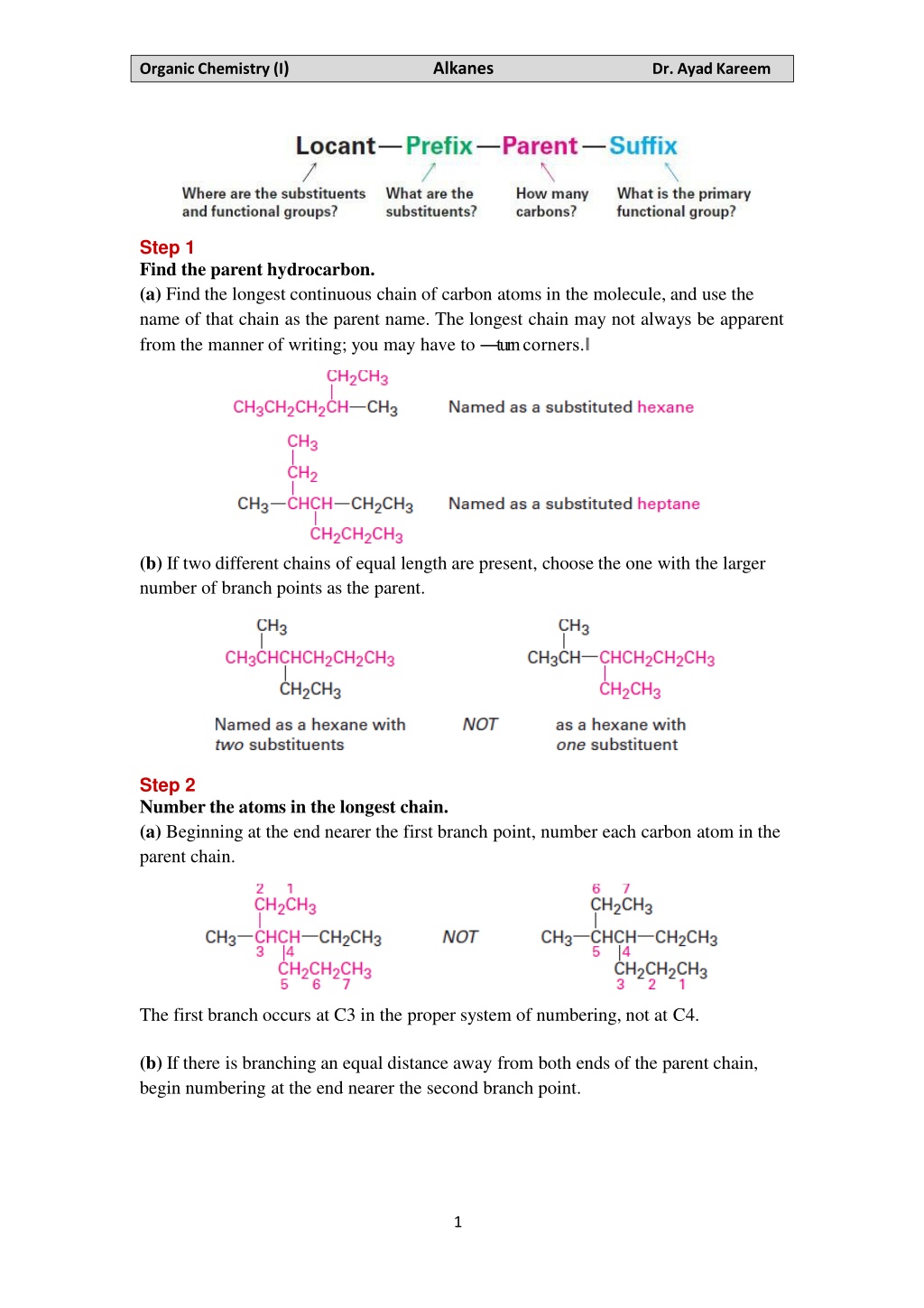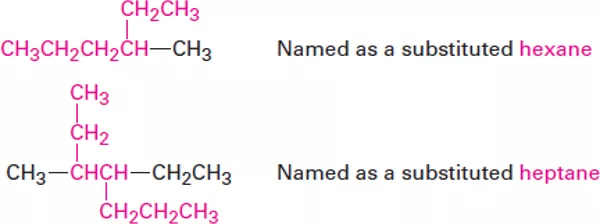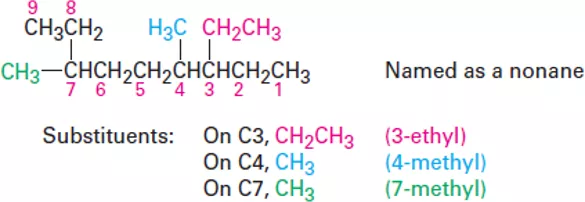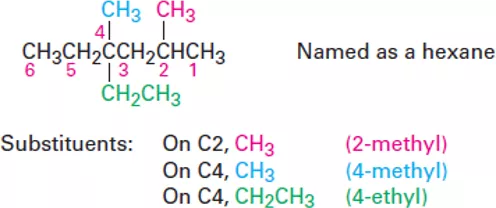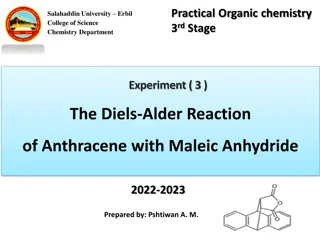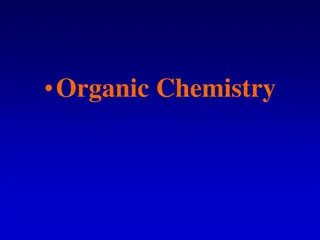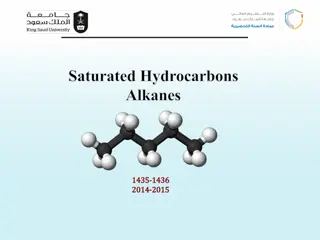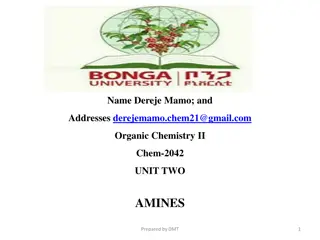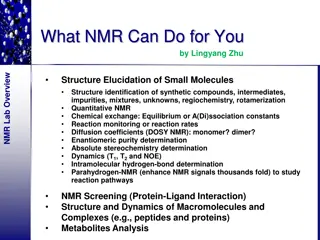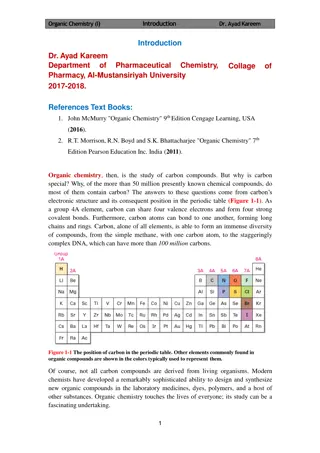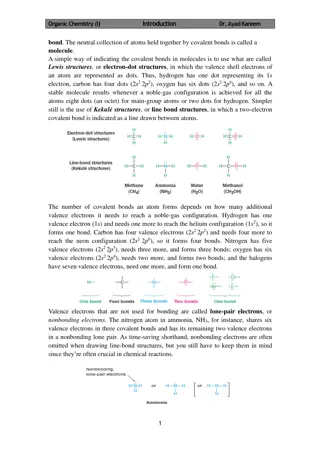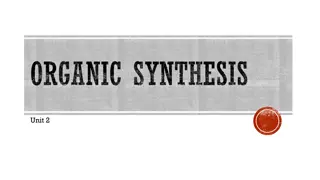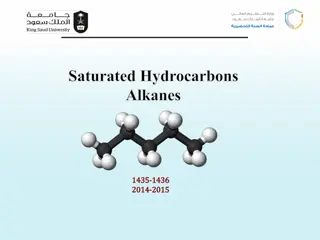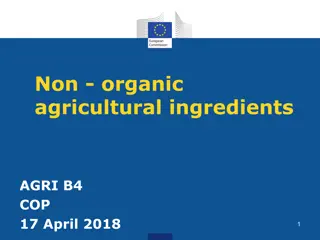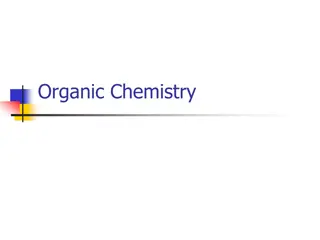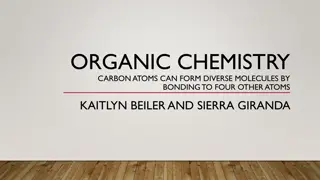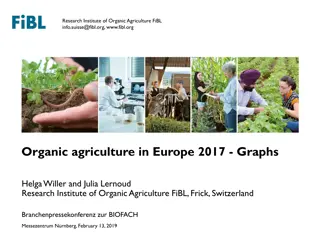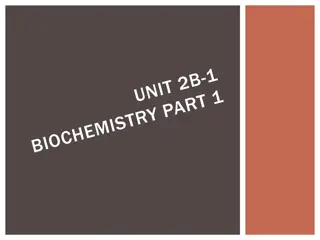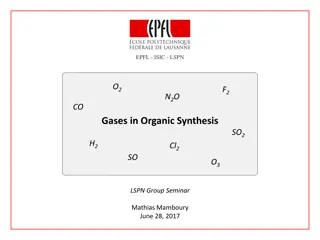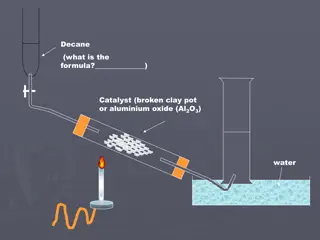Alkanes in Organic Chemistry
Exploring the fundamentals of organic chemistry with a focus on alkanes. Dive into identifying the parent hydrocarbon by finding the longest continuous chain of carbon atoms in the molecule. Learn the significance of using the name of that chain as the parent name. Gain insights into the structural characteristics of alkanes and their nomenclature in this foundational step of organic chemistry.
Download Presentation

Please find below an Image/Link to download the presentation.
The content on the website is provided AS IS for your information and personal use only. It may not be sold, licensed, or shared on other websites without obtaining consent from the author.If you encounter any issues during the download, it is possible that the publisher has removed the file from their server.
You are allowed to download the files provided on this website for personal or commercial use, subject to the condition that they are used lawfully. All files are the property of their respective owners.
The content on the website is provided AS IS for your information and personal use only. It may not be sold, licensed, or shared on other websites without obtaining consent from the author.
E N D
Presentation Transcript
OrganicChemistry (I) Alkanes Dr. Ayad Kareem Step 1 Find the parent hydrocarbon. (a) Find the longest continuous chain of carbon atoms in the molecule, and use the name of that chain as the parent name. The longest chain may not always be apparent from the manner of writing; you may have to turncorners. (b) If two different chains of equal length are present, choose the one with the larger number of branch points as the parent. Step 2 Number the atoms in the longest chain. (a) Beginning at the end nearer the first branch point, number each carbon atom in the parent chain. The first branch occurs at C3 in the proper system of numbering, not at C4. (b) If there is branching an equal distance away from both ends of the parent chain, begin numbering at the end nearer the second branch point. 1
OrganicChemistry (I) Alkanes Dr. Ayad Kareem Step 3 Identify and number the substituents. (a) Assign a number, or locant, to each substituent to locate its point of attachment to the parent chain. (b) If there are two substituents on the same carbon, give both the same number. There must be as many numbers in the name as there are substituents. Step 4 Write the name as a single word. Use hyphens to separate the different prefixes, and use commas to separate numbers. If two or more different substituents are present, cite them in alphabetical order. If two or more identical substituents are present on the parent chain, use one of the multiplier prefixes di-, tri-, tetra-, and so forth, but don t use these prefixes for alphabetizing. Full names for some of the examples we have been using are as follows: 2
OrganicChemistry (I) Alkanes Dr. Ayad Kareem Step 5 Name a branched substituent as though it were itself a compound. In some particularly complex cases, a fifth step is necessary. It occasionally happens that a substituent on the main chain is itself branched. In the following case, for instance, the substituent at C6 is a three-carbon chain with a methyl group. To name the compound fully, the branched substituent must first be named. Number the branched substituent beginning at the point of its attachment to the main chain, and identify it in this case, a 2-methylpropyl group. The substituent is treated as a whole and is alphabetized according to the first letter of its complete name, including any numerical prefix. It is set off in parentheses when naming the entire molecule. 3
OrganicChemistry (I) Alkanes Dr. Ayad Kareem As a further example: For historical reasons, some of the simpler branched-chain alkyl groups also have nonsystematic, common names, as noted earlier. The common names of these simple alkyl groups are so well entrenched in the chemical literature that IUPAC rules make allowance for them. Thus, the following compound is properly named either 4-(1-methylethyl) heptane or 4-isopropylheptane. There s no choice but to memorize these common names; fortunately, there are only a few of them. When writing an alkane name, the non-hyphenated prefix iso- is considered part of the alkyl-group name for alphabetizing purposes, but the hyphenated and italicized prefixes sec- and tert- are not. Thus, isopropyl and isobutyl are listed alphabetically under i, but sec-butyl and tert-butyl are listed under b Physical Properties of Alkanes Alkanes are sometimes referred to as paraffins, a word derived from the Latin parum affinis, meaning little affinity. This term aptly describes their behavior, for alkanes 4
OrganicChemistry (I) Alkanes Dr. Ayad Kareem show little chemical affinity for other substances and are chemically inert to most laboratory reagents. They are also relatively inert biologically and are not often involved in the chemistry of living organisms. Alkanes are used primarily as fuels, solvents, and lubricants. Natural gas, gasoline, kerosene, heating oil, lubricating oil, and paraffin wax are all composed primarily of alkanes, with different physical properties resulting from different ranges of molecular weights. 1. Solubilities and Densities of Alkanes Alkanes are nonpolar, so they dissolve in nonpolar or weakly polar organic solvents. Alkanes are said to be hydrophobic ( water hating ) because they do not dissolve in water. Alkanes are good lubricants and preservatives for metals because they keep water from reaching the metal surface and causing corrosion. Alkanes have densities around 0.7 g/mL, compared with a density of 1.0 g/mL for water. Because alkanes are less dense than water and insoluble in water, a mixture of an alkane (such as gasoline or oil) and water quickly separates into two phases, with the alkane on top. 2. Boiling point and melting point Alkanes show regular increases in boiling point and melting point as molecular weight increases (Figure 3-4). Only when sufficient energy is applied to overcome these forces does the solid melt or liquid boil. As you might expect, dispersion forces increase as molecule size increases, accounting for the higher melting and boiling points of larger alkanes. Figure 3-4 A plot of melting and boiling points versus number of carbon atoms for the C1 C14 straight-chain alkanes. There is a regular increase with molecular size. Another effect seen in alkanes is that increased branching lowers an alkane s boiling point. Thus, pentane has no branches and boils at 36.1 C, isopentane (2- methylbutane) has one branch and boils at 27.85 C, and neopentane (2,2- 5
OrganicChemistry (I) Alkanes Dr. Ayad Kareem dimethylpropane) has two branches and boils at 9.5 C. Similarly, octane boils at 125.7 C, whereas isooctane (2,2,4-trimethylpentane) boils at 99.3 C. Branched- chain alkanes are lower-boiling because they are more nearly spherical than straight- chain alkanes, have smaller surface areas, and consequently have smaller dispersion forces. Reactions of Alkanes Alkanes do, however, react with oxygen, halogens, and a few other substances under appropriate conditions. Reaction with oxygen occurs during combustion in an engine or furnace when an alkane is used as a fuel. Carbon dioxide and water are formed as products, and a large amount of heat is released. For example, methane (natural gas) reacts with oxygen according to the equation 1. Combustion is a rapid oxidation that takes place at high temperatures, converting alkanes to carbon dioxide and water. Little control over the reaction is possible, except for moderating the temperature and controlling the fuel/air ratio to achieve efficient burning. 2. Cracking and Hydrocracking catalytic cracking of large hydrocarbons at high temperatures produces smaller hydrocarbons. The cracking process usually operates under conditions that give the maximum yields of gasoline. In hydrocracking, hydrogen is added to give saturated hydrocarbons; cracking without hydrogen gives mixtures of alkanes and alkenes. 6
OrganicChemistry (I) Alkanes Dr. Ayad Kareem 3. Halogenation Alkanes can react with halogens (F2, Cl2, Br2, I2) to form alkyl halides. For example, methane reacts with chlorine to form chloromethane (methyl chloride), dichloromethane (methylene chloride), trichloromethane (chloroform), and tetrachloromethane (carbon tetrachloride). The reaction of an alkane with Cl2occurs when a mixture of the two is irradiated with ultraviolet light (denoted hy, where y is the Greek letter nu). Depending on the time allowed and the relative amounts of the two reactants, a sequential substitution of the alkane hydrogen atoms by chlorine occurs, leading to a mixture of chlorinated products. Methane, for instance, reacts with Cl2to yield a mixture of CH3Cl, CH2Cl2, CHCl3, and CCl4. A radical is highly reactive because it contains an atom with an odd number of electrons (usually seven) in its valence shell, rather than a stable, noble gas octet. A radical can achieve a valence-shell octet in several ways. For example, the radical might abstract an atom and one bonding electron from another reactant, leaving behind a new radical. The net result is a radical substitution reaction. 7
OrganicChemistry (I) Alkanes Dr. Ayad Kareem An example of an industrially useful radical reaction is the chlorination of methane to yield chloromethane. This substitution reaction is the first step in the preparation of the solvents dichloromethane (CH2Cl2) and chloroform (CHCl3). Like many radical reactions in the laboratory, methane chlorination requires three kinds of steps: initiation, propagation, and termination. Initiation Irradiation with ultraviolet light begins the reaction by breaking the relatively weak Cl-Cl bond of a small number of Cl2molecules to give a few reactive chlorine radicals. Propagation Once produced, a reactive chlorine radical collides with a methane molecule in a propagation step, abstracting a hydrogen atom to give HCl and a methyl radical ( CH3). This methyl radical reacts further with Cl2in a second propagation step to give the product chloromethane plus a new chlorine radical, which cycles back and repeats the first propagation step. Thus, once the sequence has been initiated, it becomes a self-sustaining cycle of repeating steps (a) and (b), making the overall process a chain reaction. Termination Occasionally, two radicals might collide and combine to form a stable product. When that happens, the reaction cycle is broken and the chain is ended. Such termination steps occur infrequently, however, because the concentration of radicals in the reaction at any given moment is very small. Thus, the likelihood that two radicals will collide is also small. 8
